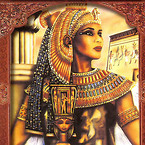
EGYPTIAN ANCIENT LANGUAGE: Egyptian dialect is an Afro-Asian dialect previously talked in old Egypt. Presently wiped out, it however offered ascend to the coptic dialect, ceremonial dialect which stopped to be utilized as living dialect. Advancement of the Egyptian dialect on over 4500 years can be isolated in a few incredible periods:

Ancient Egyptian (before 2600 BC); Early Dynastic Period Old Egyptian (2600 BC to 2000 BC); Old Kingdom Middle Egyptian (2000 BC to 1300 BC); Middle Kingdom up to the Amarna period Late Egyptian (1300 BC to 700 BC); Amarna period through the Third Intermediate Demotic Egyptian (seventh BC to fifth AD); Late Period through Roman circumstances Coptic Egyptian (first AD to seventeenth AD); Early Roman circumstances to early current circumstances
HIEROGLYPHIC CHARACTERS: The Egyptologists recognize 3 classifications of Hieroglyphic Characters: 1. Logograms, which speak to a protest (pictogram) or an idea (ideogram); 2. Phonograms, which compare to a separated consonant or a progression of consonants; 3. Determinatives, ?moronic? signs which show the lexical field to which has a place the word.
Seemed four thousand year BC, hieroglyphic characters will be utilized until the Roman period, in this manner amid more than three thousand years. Hieroglyphic characters information has been lost when the Roman sovereign Theodose shut the agnostic spots of love in 380. Fortunately, following fourteen centuries, Rosetta stone revelation, and also the virtuoso of Jean-François Champollion to break, hieroglyphic characters? seal has been poor.
ROSETTA STONE: The Rosetta stone is a stele section from old Egyptian birthplace conveying three renditions of a similar content, in two dialects (old Egyptian and old Greek) and three written work frameworks (hieroglyphic characters, demotic and Greek). The Rosetta stone was the key in the interpreting of Egyptian hieroglyphic by Jean-François Champollion in 1822. The Rosetta stone was found in the town of Rachid (Rosetta) in July 1799 amid the Bonaparte battle in Egypt. Since 1802, The Rosetta stone is presented to the British Museum.
TOMBS OF ANCIENT EGYPT: Ancient Egyptians had funerary propensities which, as indicated by them, were important to guarantee their everlasting status after death. Theory customs and conventions included embalmment, throwing of enchantment spells, and entombment with particular merchandise thought to be required in existence in the wake of death. These customs and conventions utilized by the antiquated Egyptians advanced and old funerary propensities were disposed of and new ones received.
As indicated by the period and the societal position of the dead, the tomb took an alternate viewpoint. We recognize three sorts of tombs: - Ancient Egypt Empire: mastabas (dignitaries), and pyramids (rulers) - Average/New Empire: hypogeans (populace)
Instructions to MUMMIFY: The preservation procedure is performed by the embalmers clerics who are specific and just permitted to complete treating (amid embalmment, the ministers convey the Anubis cover). The body is washed with water or palm oil, then shaved and depilated. The embalmment procedure itself starts four days after death and most recent 70 days more than 5 stages: 1. The mind is expelled with a long bronze guide brought into the nostrils; 2. The inward organs are pulled back from the body: digestion tracts, stomach, liver and lungs are placed in vases called canopic containers. 3. The body is got dried out, loaded with cloths containing natron (salt) and aromatics. All the body is additionally secured with natron and presented to the sun in a tank amid 40 days. 4. After lack of hydration, the ministers rub the body with myrrh, relax the skin with salves (oils and tars), then they stuff the stomach cavity with textures. The body is then rsewed. 5. The last operation which endures 15 days is the wrapping of every part by fine flax strips impregnated with gum. Defensive and enchantment ornaments are set at different spots of the body, fundamental to bolster the resurrection. Toutankhamon was secured by a hundred special necklaces.
Antiquated EGYPT CANOPIC JAR: During the embalmment procedure, the inward organs (digestion tracts, stomach, liver and lungs) are pulled back from the body and put in vases called canopic jugs. The heart is left set up in light of the fact that required while the dead is judge by Osiris.
https://www.facebook.com/AncientOfEgypt
You may also like this
gods of Ancient Egyptian
Ancient Egyptian Jewelry
tag
Travel to Egypt,Egypt Travel Guide,Egypt Tours,Nile Cruises,Vacations,Hotels,
Tourist Attractions,Ancient Egypt,Pyramids,naama bay,Egypt,egypt,pyramids,
Pharaohs, Egypt Sharm El Sheikh,Sharm El Sheikh Egypt,Siwa Oasis,Enjoying Egypt,
Sharm El Sheikh,hurghada, marsa alam,شرم الشيخ,taba,makadi bay,dahab,Tutankhamun,
el gouna,sharm,shark bay,sheikh,шарм эль шейх,hyatt regency sharm,Nubia,
charm el cheikh,sharm plaza,meteo sharm el sheikh,sierra sharm el sheikh,
hyatt regency sharm el sheikh, booking sharm,nabq bay,nuweiba,Red Sea,
four seasons sharm el sheikh,egypt resorts,savoy sharm el sheikh,savoy sharm,
el sheikh,sharm el sheikh news,sharm el sheikh airport,Sharm El Sheikh – Egypt,
sharm el sheikh weather,sharm el sheikh hotels,flights to sharm el sheikh,Aswan,
gods of egypt,ancient egypt,egyptian gods,egyptian food,ancient egyptian food
egypt people,egyptian food recipes,ancient egypt food,egyptian desserts,ancient egyptian
egyptian restaurant,egypt food,egyptian houses,egyptian recipesTa'amia
ancient egyptian houses,food in egypt,egypt houses,egyptian cuisine,Pharaonic Chicken recipes
egyptian bread,egypt desert,what did ancient egyptians eat,egyptian peasant
Pharaonic Chicken recipe,Ancient Egyptian Soup Recipe,
Click to Post

